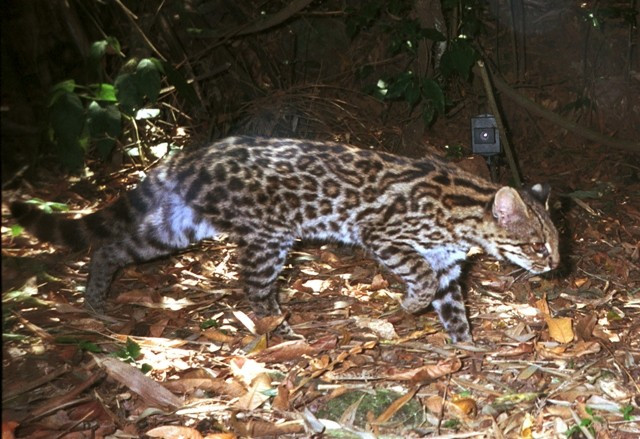New Species of Tigrina Wild Cat Discovered in Brazil [PHOTOS]

A new species of wild cat has been discovered in Brazil, with researchers saying their find shows how little scientists still know about the natural world.
The housecat-sized animal is a type of tigrina - previously researchers thought the Brazlilian tigrina was a single species.
However, molecular comparison of the new cat found in northeastern Brazil, showed they are a completely separate species to tigrinas living in southern parts of the country.
Published in the Cell Press journal Current Biology, researchers say the new species has important implications for conservation efforts in Brazil, adding that much more is now known about tigrinas in southern Brazil.
The team, with researchers from the Pontifical Catholic University in Brazil and Universidade Federal do Rio Grande do Sul, said there is no evidence of interbreeding between the two types of tigrina.
Study author Eduardo Eizirik said: "Our study highlights the need for urgent attention focused on the Brazilian northeastern tigrinas, which are virtually unknown with respect to most aspects of their biology."

According to the study, the two species of tigrinas are suited to different habitats, with northeastern cats living in savannahs, dry shrub lands and forests, while southern cats live in denser and wetter Atlantic forests.
"Such distinct habitat associations provide a hint to potentially adaptive differences between these newly recognised species and may have been involved in their initial evolutionary divergence," study co-author Tatiane Trigo said.
The study also looked at a complicated set of relationships between tigrinas and two other species of Neotropical cats.
Their evolutionary history involves an ancient hybridisation and movement of genes between northeastern tigrinas and the pampas cat.
Southern tigrinas, on the other side of Brazil, hybridise with Geoffroy's cats, which leads to extreme levels of interbreeding between the species in their contact zone.
The researchers say these patterns provide evidence that hybrid species do emerge through interbreeding between distinct animal species.
Eizirik said: "All four species are threatened, and we need to understand as much as possible regarding their genetics, ecology, and evolution to be able to design adequate conservation strategies on their behalf."
© Copyright IBTimes 2025. All rights reserved.






















